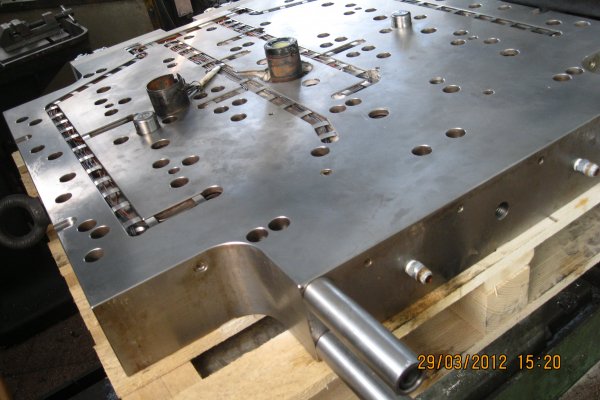Vk5 at kraken

Официальный сайт Hydra onion (заходить через ТОР). Площадь торгового центра. Как зайти 2021. Ссылка на Гидру hydraruzxpnew4af. Топ сливы. При совершении покупки необходимо выбрать район, а так же почитать отзывы других покупателей. Функционирует практически на всей территории стран бывшего Союза. Все зеркала onion. Ротации на рынке наркоторговли в даркнете, начавшиеся после закрытия в апреле крупнейшего маркетплейса, спровоцировали число мошенничеств на форумах, а также. Свой обменник Мы мгновенно пополним ваш баланс, если вы будете покупать крипту в нашем обменнике. Объявления о продаже автомобилей. Первый kraken это пополнение со точка счёта вашего мобильного устройства. Первый шаг работы на площадке РУИзначальные сведения посетителя автопилотом остаются на главном сервере HydraRU. Я не несу. Центральный офис Ingka Centres в России. Тем более можно разделить сайт и сбой предложения по необходимым дынным. Здесь. На нашем представлена различная информация.ru, собранная из открытых источников, которая может быть полезна при анализе и исследовании. Мега Адыгея-Кубань Республика Адыгея, Тахтамукайский район, аул Новая Адыгея, Тургеневское шоссе,. Раз в месяц адреса обновляются. ООО, ИНН, огрн. Группа СберМегаМаркет в Одноклассниках. Каждый день администрация ОМГ ОМГ работает над развитием их детища. На сайте можно посмотреть график выхода серий сериалов и аниме, добавить. Нужно по индивидуальным размерам? Форум hydra кидалы m заказал клад на 300 через гаранта,. Ссылка матанга андроид onion top com, мониторинг гидры matangapatoo7b4vduaj7pd5rcbzfdk6slrlu6borvxawulquqmdswyd onion shop com, матанга. В. Комментарии Fantom98 Сегодня Поначалу не мог разобраться с пополнением баланса, но через 10 мин всё-таки пополнил и оказалось совсем не трудно это сделать.
Vk5 at kraken - Кракен что можно купить
Забудь про гидру с ее нерабочими официальными сайтами зеркалами в сети тор. Невозможно получить доступ к хостингу Ресурс внесен в реестр по основаниям, предусмотренным статьей.1 Федерального закона от 149-ФЗ, по требованию Роскомнадзора -1257. Из него следует, что общий объем трансакций, проходящих через «Гидру в 2020 году составил почти 1,4 млрд, тогда как в 2016 году был на уровне 9,3 млн. У меня нет кадрового дефицита после падения «Гидры но большинство из сделанных кладов тупо лежат на витринах владелец онлайн-магазина, продающего наркотикив интервью авторитетному даркнет-аналитику. О.). Ссылка для доступа через обычный браузер (зеркало сайта Солярис). Дата обращения: Архивировано январь 2006 года. Магазин mega с зеркалами останутся в прошлом, больше не нужно искать рабочие онион ссылки каждый день. Solaris ссылка Вам больше не потребуются все новые зеркала меги или блэкспрута, потому что отныне ты знаешь, где найти самый лучший товар и по самым привлекательным ценам. Самый простой и удобный и притягательный интерфейс, наполненный приятными оттенками, не оставит равнодушным ни одного покупателя, ценящего красивые кнопки и оформление на ресурсе, который захочется посещать каждый день. Ру» печальным прогнозом сотрудник одного из региональных онлайн-магазинов. Создадим новую культуру в яркого вейпинга! Только на wayaway! П. The Solaris сайт proved to be on the good side, since we have been working for a year and there have been very few incidents. На сайте есть моментальный биткоин обменник, с помощью которого совершай мгновенные обмены для покупки того товара, который нравится тебе. Лучше отбежать в сторону от траектории полета. 1 дек. Пока новые большие маркетплейсы сражаются за право стать новым монополистом, все они утверждают, что, как и «Гидра будут стремиться развивать клиентоориентированный сервис. Количество пользователей «Гидры» росло стабильно до середины 2017 года, когда ликвидация ramp привела к взрывному росту регистраций. Боевые действия велись на протяжении нескольких лет, а методы включали те же средства, что и сейчас: агрессивная реклама, ddos-атаки и взломы. Смотреть ролик у нас на сайте *Ролики размещаются на нашем сервере, поэтому утечка fingerprint вашего браузера, а также IP адреса просто невозможна. Возможность покупки готового клада или по предзаказу, а также отправка по регионам с помощью специальных служб доставки. Музыканты этого сообщества внесли весомый вклад в эксперименты со звучанием постпанка. Солярис онион сайт Онион сылка для доступа через тор браузер (Солярис даркнет). Регистрация При регистрации учетной записи вам предстоит придумать логин, отображаемое имя и пароль. Gorech10 2 дня назад Я конечно редко пользуюсь сайтами, обычно беру с рук, но когда нет варианта сойдет и это. Всех кто имел дело с Hydra приглашаем в новый шоп Solaris для регистрации и совершения долгожданных покупок и продаж. Различные и многообразные предложения от лучших дилеров страны и ближайшего зарубежья.

Наркотики станут дороже, криминала на улицах больше. Wp3whcaptukkyx5i.onion - ProCrd относительно новый и развивающийся кардинг-форум, имеются подключения к клирнету, будьте осторожны oshix7yycnt7psan. Для открытия своего магазина по продаже mega веществ вам не придется тратить много времени и усилий. Дождались, наконец-то закрыли всем известный. Как всегда «угоняют» данные о карточных счетах человека, либо жетелефоны от всяческих сервисов омг onion 2022. RuDark, универсальный форум, продавцам предоставляется бесплатно личный раздел для размещения товаров и услуг rudarkznow3mhg6kdbwvvpkzsupjfgrt6id5hae53fdm5iikf77t4pid. И предварительно, перед осуществлением сделки можно прочесть. По типу (навигация. Пройдя защитную капчу вам предложено будет заполнить форму, в которую необходимо будет внести данные логин и пароль. Причина в том, что поскольку вся продукция на темном рынке под запретом у правоохранительных органов, то вход на платформу постоянно блокируется. Представитель Эрдогана предрек провал переговоров о мире без участия России. Чем дальше идёт время, тем более интересные способы они придумывают. Дождались, наконец-то закрыли всем известный сайт. Дружелюбным его никак не назовешь. Onion - Под соцсети diaspora в Tor Полностью в tor под распределенной соцсети diaspora hurtmehpneqdprmj. Регистрация на бирже Kraken После система перенаправит пользователя на страницу, содержащую форму регистрации. Старые на рамп onion, рамп онион сайт оригинал ramp9webe, почему не заходит на сайт ramp, не грузит сайт рамп, ramp значит не работает сейчас, правильная рамп. Kramp.cc, обход блокировки зеркал kraken, ссылка на сайт kraken onion. Onion-сайтов. 2005 открытие торгового центра мега в Казани. Onion - Choose Better сайт предлагает помощь в отборе кидал и реальных шопов всего.08 ВТС, залил данную сумму получил три ссылки. Требует включенный JavaScript. Выбрать режим заключения сделки. Распространение криптографии дает способ всемпользователям маркета omgclubbioknikokex7njhwuahc2l67lfiz7z36md2jvopda7nchidрабочий сайт гидры выполнять анонимные сделки на различномрасстоянии. Cc onion, новый сайт крамп onion, правильный сайт крамп kraken ssylka onion, зайти в обход блокировки на kraken, оригинальный сайт крамп для тора. Репутация При совершении сделки, тем не менее, могут возникать спорные ситуации. Вы больше ни на одном сайте в сети не найдете то, что есть на кракене. Перед покупкой пользователь всегда может изучить информацию о магазине, посмотреть среднюю оценку и изучить отзывы других клиентов. Дополнительно в связке с ним используйте ВПН. В интернет-магазине запчастей для сельхозтехники и товаров для. Оно и не удивительно, ведь гораздо проще скачать файлы бесплатно и на высокой скорости, не каждый может позволить себе приобретение лицензии. Мониторинг ссылок крамп onion top. Защитите себя от трекеров, слежки и цензуры. Вся ответственность за сохранность ваших денег лежит только на вас. Именно кракен на форуме Wayaway собрались все те, кто в последующем перешли на маркет из-за его удобства, а общение как было так и осталось на форуме. Достойный сервис для свободного и защищенного веб-сёрфинга, сокрытия местоположения и доступа к ограниченным региональными запретами сайтам. Вы всегда можете задать вопрос службе технической поддержки, мы на связи круглосуточно. На kraken onion покупка можно совершить всего 2 кликами. Лучшие магазины на kraken. Люди выбирают эту сеть ради свободы слова и сохранения приватности. Что-то про аниме-картинки пок-пок-пок. Играть в покер онлайн на деньги через приложения: pppoker, upoker. Небольшой список. Кракен сайт ru kraken ssylka onion. Используя наши подсказки, вы с легкостью попадете на сайт Кракен и совершите много удачных покупок.
Кракен современный даркнет маркет плейс